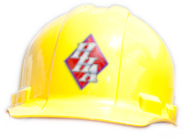source credit: Deposit Photos
If you’re uncomfortable in your home and changing the thermostat doesn’t help, it may be due to these five sources of air leaks.
1. The Fireplace
During cold weather, you open the fireplace flue so smoke and carbon dioxide can escape through the chimney. But it’s easy to forget to close the flue during warm weather.
And if the flue is open, air will quickly leak from the home and your energy bill will have a significant spike.
If you have a traditional throat damper, poke your head inside the fireplace — assuming it hasn’t been used for months and it’s safe to do so! — and shine a flashlight on the damper. If there’s a barrier, the flue is closed. If you can see into the flue, it’s open.
Alternatively, if you have a top-mount damper, grab some binoculars, head outside and focus on the chimney to verify that the vents are closed.
In either case, if the flue is open, close it immediately to make your home energy efficient.
2. The Roof
The roof’s condition has a major impact on your comfort — after all, it’s the closest thing to the sun, and it takes the biggest beating from rain, snow, limbs and leaves.
It’s important to routinely check the roof for damage, both from the outside and inside.
First, carefully climb a ladder and walk on the roof to check for curling, cupping or cracked shingles, and make repairs or replacements as needed.
Then, visit the attic and examine the roof. If you see sunlight, that’s not the only thing that can enter the home. So can air, rain, snow, leaves and debris.
You can patch some bad spots, but widespread roof problems can lead to structural damage. And remember: Roofs don’t last forever — an asphalt shingle roof may last 20 to 30 years. If yours is much older than that, it’s probably time to replace it.
Metal roofing is an increasingly popular alternative to asphalt. It comes in different styles and colors to match just about any home’s architecture, and in many cases, installers can lay it right on top of asphalt.
3. The Ductwork
Sometimes, the cause of an air leak is the most expected one: the source of the air itself!
While you’re in the attic checking the roof, go ahead and check the ductwork, too. Leaks allow air from the furnace or A/C to escape.
Fortunately, the fix is easy and affordable.
You just have to locate the leak, seal it with inexpensive metallic foil tape designed for ductwork repairs and improve the seal with duct mastic.
4. The Attic
Your home can never have enough insulation. Unfortunately, a lot of homes have an inadequate amount — or worse, none at all.
While you’re in the attic checking the ductwork, make sure the ceiling joists aren’t bare. If they are, buy faced insulation, which has a paper side facing toward the living space. This blocks moisture.
If the attic has a thin layer of insulation, buy unfaced insulation to add on top. (That’s the kind with no paper on the bottom.) Choose the right R-value to match your home’s needs. Insulation’s performance is expressed by the R-value, which ranges from 2.0 to 8.0 per inch of insulation.
Hollow walls also can be pumped with insulation to prevent energy loss.
5. The Gaps
Finally, there’s no shortage of cracks and gaps that lead to air leaks. So, try this step-by-step plan to cover the most common bases.
First, caulk around windows and doors to seal the home’s envelope. Homes expand and contract due to highs and lows in humidity, so do this each summer and winter.
Second, check each entry door’s threshold for damage and replace a failing rubber seal — or the entire threshold — as needed.
Third, check for gaps between the threshold and the door and install door sweeps as needed. Some door sweeps attach to the bottom of the door; others are mounted inside the door.
You also can insulate electrical outlets, install or replace weatherstripping in windows and doors, and cover window air conditioners for a weather-tight seal.
source credit: https://bit.ly/2WOc7ow


